Key takeaways
- Wittgenstein’s Tractatus challenges readers to rethink the relationship between language and reality, emphasizing that the world consists of facts, not just objects.
- The concept of “picture theory” illustrates how language mirrors reality, prompting introspection on how effectively words represent our thoughts.
- The Tractatus highlights the limits of language, encouraging acceptance of the unspeakable and fostering a deeper philosophical humility.
- Teaching and engaging with the Tractatus nurtures critical thinking and improves communication skills by emphasizing clarity and the careful breakdown of complex ideas.
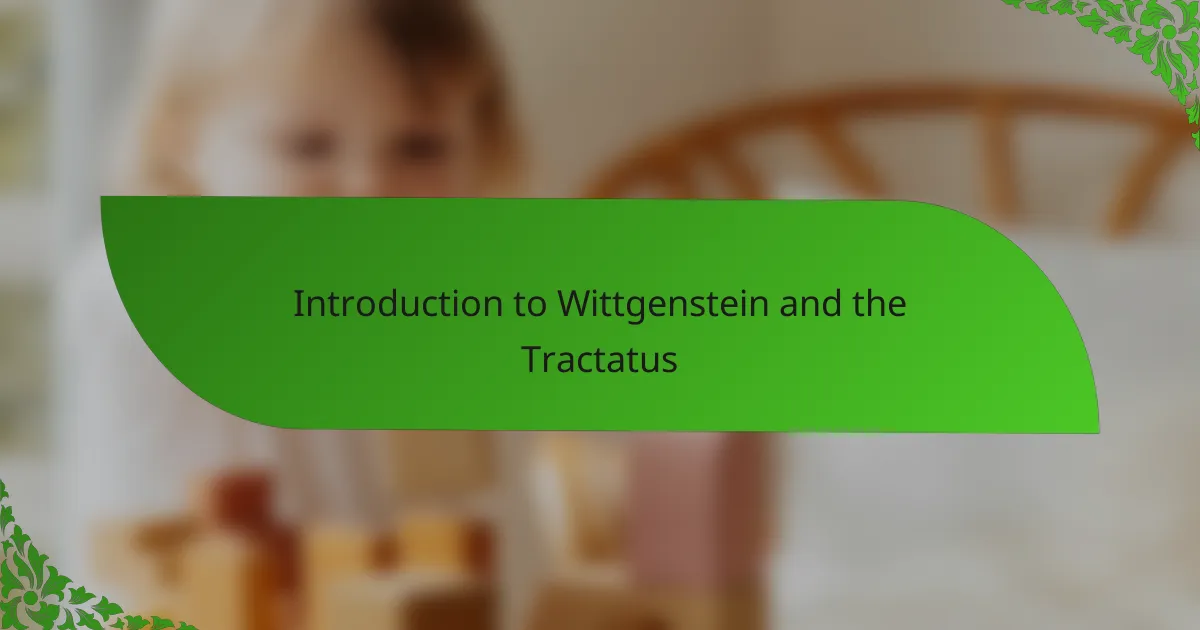
Introduction to Wittgenstein and the Tractatus
Ludwig Wittgenstein is a philosopher who, to me, feels both elusive and captivating. When I first encountered his work, the Tractatus Logico-Philosophicus, I was struck by how compact and cryptic it seemed, like a puzzle demanding careful unraveling. Have you ever come across a text that seems simple yet hides layers of complexity beneath its surface? That’s exactly how the Tractatus challenges you.
The Tractatus itself is a daring attempt to uncover the limits of language and thought. Wittgenstein’s disciplined, almost poetic style made me reflect deeply on how words shape our reality—and where they inevitably fall short. I often find myself returning to its numbered propositions, pondering whether the world is really as neatly structured as he suggests.
What draws me most is Wittgenstein’s unwavering commitment to clarity, even if it means confronting silence at the boundaries of expression. His work forces a kind of philosophical honesty: can we fully say what we mean, or do some truths lie beyond language? Wrestling with these questions through the Tractatus has profoundly shaped how I view philosophy itself.
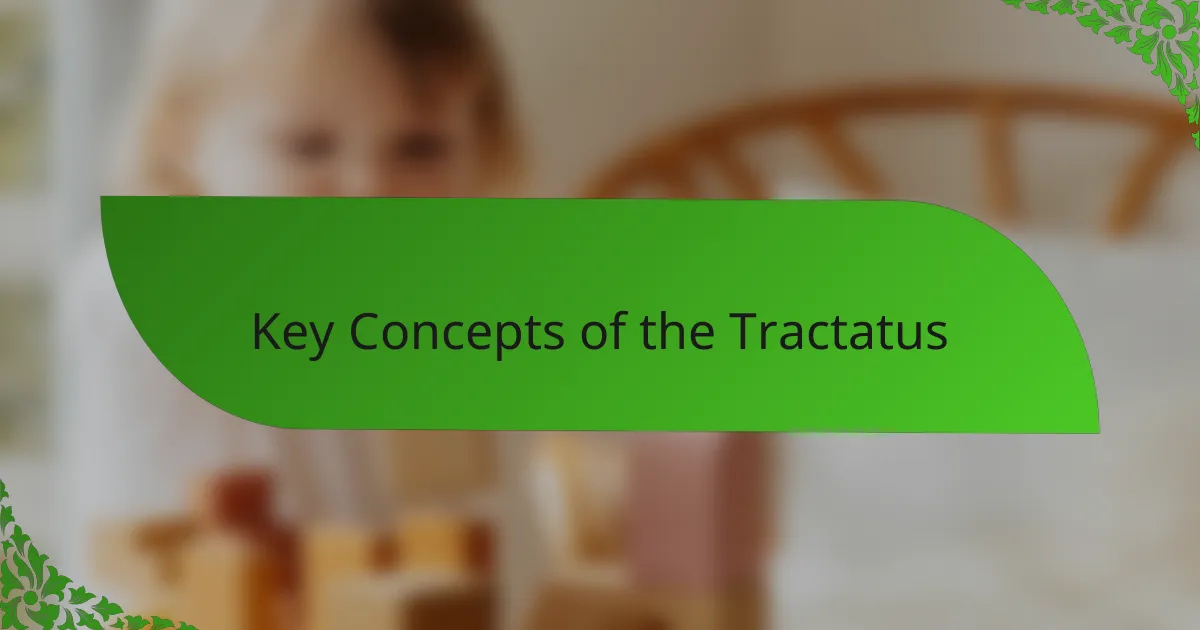
Key Concepts of the Tractatus
One concept that stuck with me early on is Wittgenstein’s idea that the world consists of “facts,” not things. At first, this felt puzzling—how can reality be about facts rather than objects? But the more I reflected, the more I saw how facts, understood as states of affairs, capture the way things stand in the world rather than just the things themselves. It made me question how I usually talk about reality and whether my language really matches the world’s structure.
Then there’s the notion of the “picture theory” of language, which suggests that language works by mirroring reality through logical pictures. This blew my mind because it’s both simple and profound—words and sentences, according to Wittgenstein, function like pictures that represent possible states of affairs. I remember trying to apply this in daily conversations, wondering how much we actually “picture” with our words and when language might fail us, especially with abstract or emotional topics.
Finally, the Tractatus introduces a boundary where language must remain silent—where things can’t be meaningfully said but only shown. This is both frustrating and strangely comforting to me. It acknowledges the limits of language without dismissing the mystery beyond. How often do I feel words fall short when grappling with emotions, ethics, or the ineffable? Wittgenstein’s candid admission feels like a nod to those unspeakable experiences we all face.
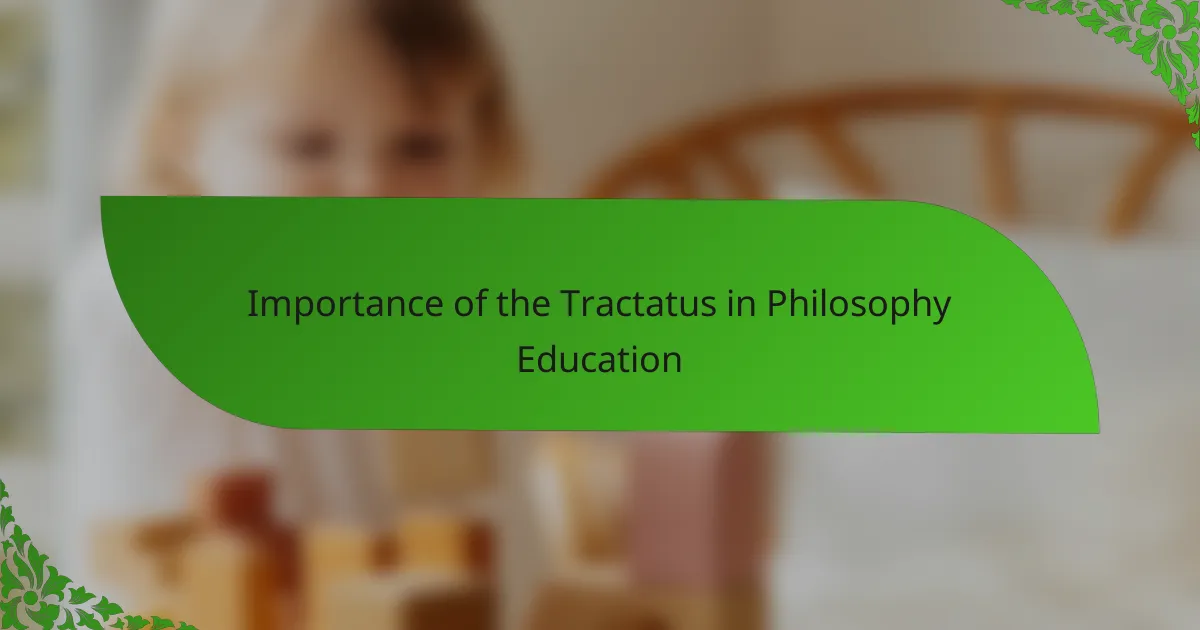
Importance of the Tractatus in Philosophy Education
The Tractatus holds a special place in philosophy education because it pushes students to rethink the very tools they use—language and logic—to grasp reality. I remember the first time I taught it; watching students wrestle with its tight structure was like seeing them untangle a web they didn’t realize they were caught in. It’s not just about learning theories but about challenging how we think and express those thoughts.
What fascinates me is how the Tractatus encourages a disciplined clarity that’s rare in philosophy. In my experience, this clarity acts like a philosophical workout, forcing you to strip away fluff and face the boundaries of what can be said. It’s a humbling process, yet it deepens one’s appreciation for both language’s power and its limits.
Have you ever wondered why some truths seem just beyond words? The Tractatus makes this a core lesson in philosophy education. I often find that grappling with its silent spaces opens students—and myself—to the profound awareness that some aspects of life resist tidy explanation, inviting a more reflective, respectful approach to meaning itself.
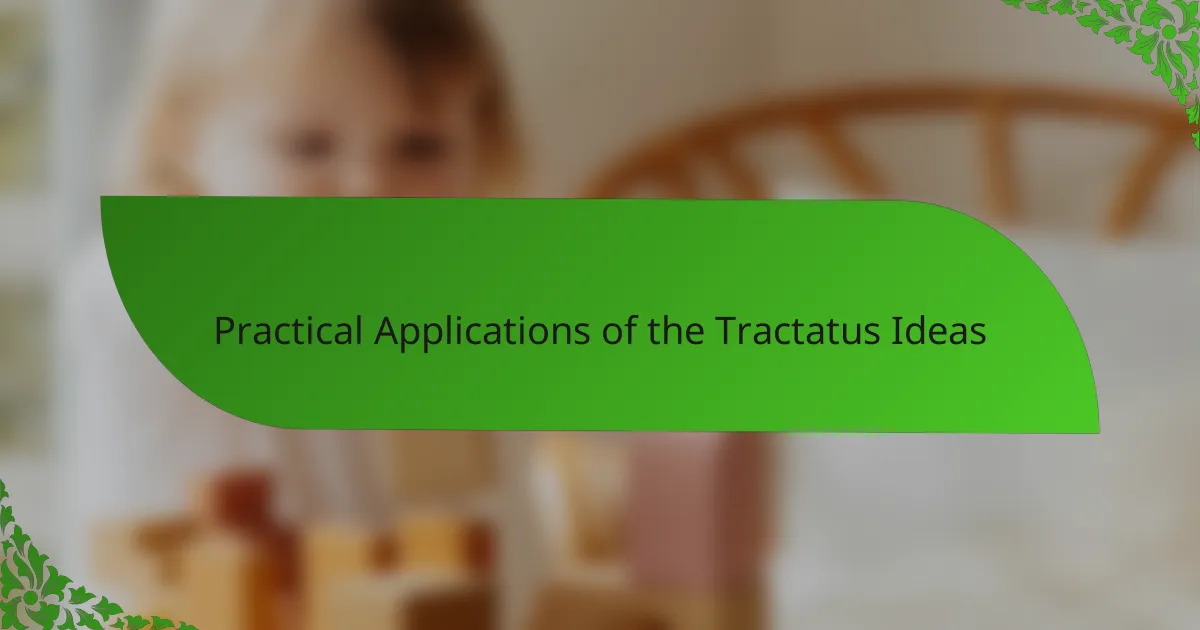
Practical Applications of the Tractatus Ideas
When I tried applying the Tractatus ideas beyond theory, I realized they offer a surprisingly practical lens on communication. Wittgenstein’s focus on language as a “picture” of reality made me pay closer attention to how I choose words in everyday conversations. Have you noticed how often misunderstandings arise simply because we assume our words perfectly capture our thoughts? This insight pushed me to be more precise and, paradoxically, more aware of what I can’t fully express.
Another practical takeaway I experienced was embracing the Tractatus’ boundary of silence. At first, it felt like a limitation, but then I started to see it as an invitation—a way to recognize when language reaches its edge, especially with emotions or ethics. Instead of forcing articulation, I learned to accept those moments quietly, allowing space for meaning beyond words. Isn’t that a relief in a world often overwhelmed by endless talk?
Lastly, the disciplined clarity Wittgenstein advocates translates well into problem-solving and critical thinking. When facing complex issues, I try to break them down into their “atomic” facts, just as the Tractatus suggests. This approach sharpens focus and reduces confusion. From teaching philosophy students to navigating real-life dilemmas, I find this method brings not just clarity but humility—reminding me how much remains unsaid beneath the surface.
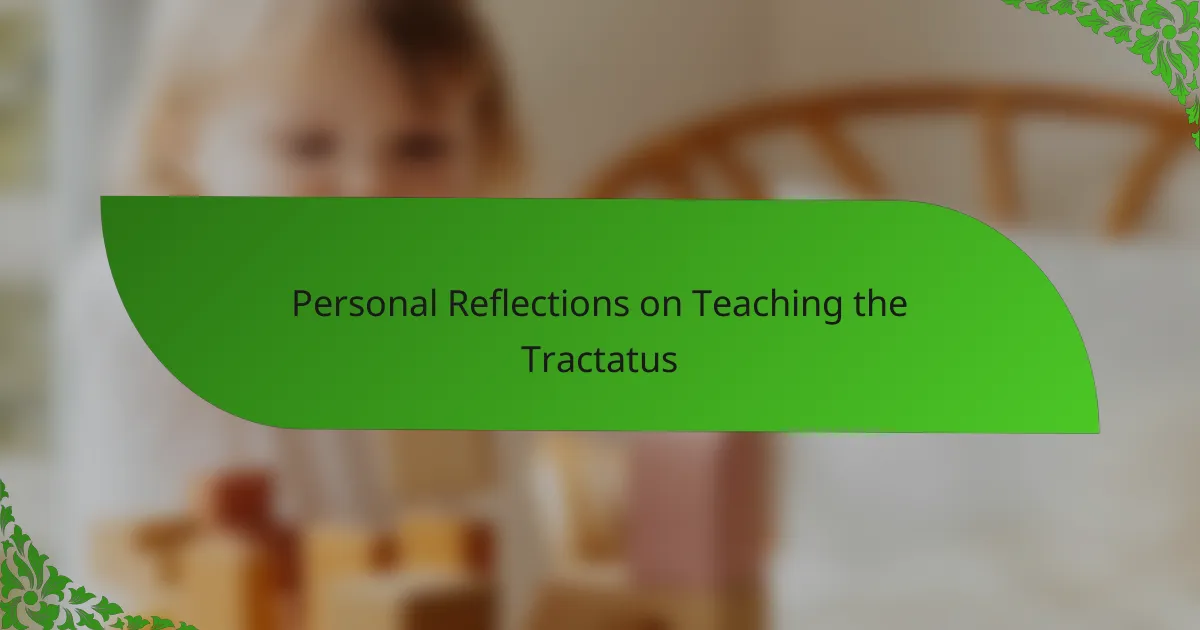
Personal Reflections on Teaching the Tractatus
Teaching the Tractatus always feels like opening a door to a labyrinth. I recall one class where a student paused, looked genuinely puzzled, and asked, “How can something so brief hold such depth?” That moment reminded me how the work’s precision demands patience—it’s not about quick answers but a slow, careful dance with its ideas.
I’ve noticed that guiding students through Wittgenstein’s rigid structure can sometimes feel like navigating a tightrope. There’s a constant tension between striving for absolute clarity and acknowledging when language inevitably falls silent. It’s challenging but also deeply rewarding to witness that shift—from frustration to a humble acceptance of mystery.
What strikes me most is how teaching the Tractatus transforms my own thinking. Each discussion peels back another layer of my assumptions about language and reality. It’s like we’re all explorers together, venturing into terrain that’s as much about what we can’t say as what we dare to voice.
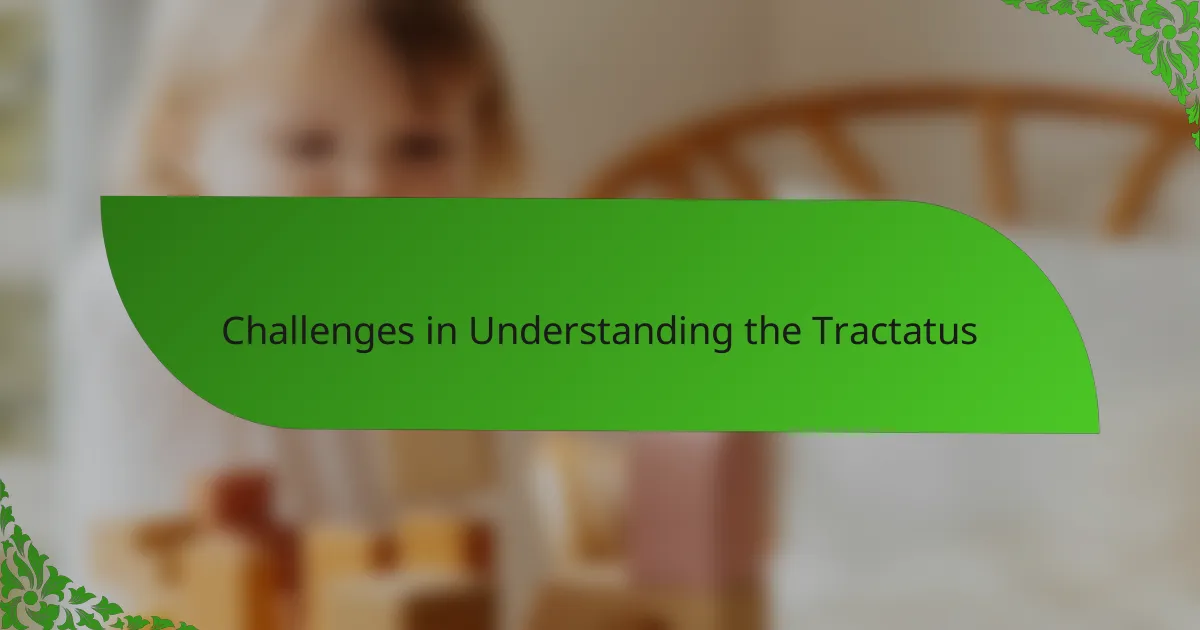
Challenges in Understanding the Tractatus
One challenge I often grappled with is Wittgenstein’s dense and cryptic style. Even after multiple readings, I found myself pausing at certain propositions, wondering if I had missed a subtle nuance or if Wittgenstein deliberately left space for interpretation. Have you ever felt that frustration, where clarity seems just out of reach despite sincere effort? That tension between clarity and obscurity is a hallmark of engaging with the Tractatus.
Another hurdle lies in the abstract nature of Wittgenstein’s ideas. Concepts like the “picture theory” initially felt more like puzzles than explanations. I sometimes questioned how these notions could apply beyond philosophical theory—weren’t they too removed from everyday language? Wrestling with these abstractions forced me to slow down and appreciate the meticulous structure Wittgenstein constructed, even if it meant sitting with uncertainty longer than I was comfortable.
Finally, there’s the boundary where language must remain silent—a profoundly unsettling yet beautiful idea. It’s challenging because it asks us to accept limits rather than conquer them. I recall a moment of uneasy clarity realizing that some truths resist verbal expression altogether. Does embracing this silence feel like giving up or gaining wisdom? For me, it became a moment of philosophical humility, learning when to listen and when to simply reflect in quiet.
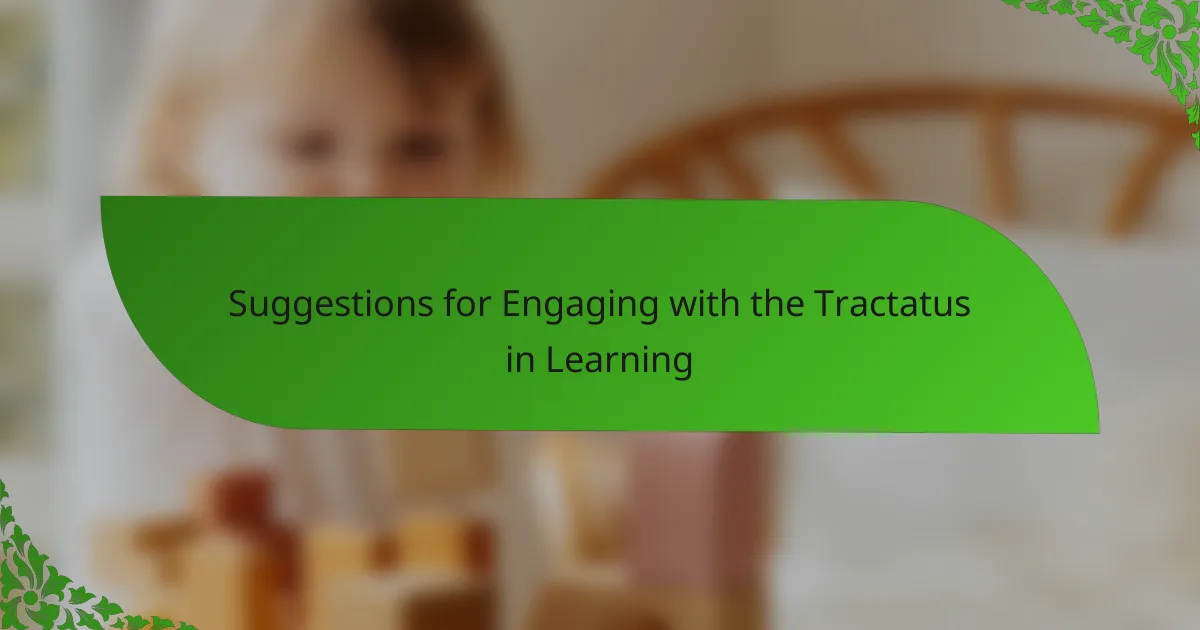
Suggestions for Engaging with the Tractatus in Learning
When I first engaged with the Tractatus in a classroom setting, I found that breaking down Wittgenstein’s dense propositions into bite-sized parts helped both me and my students grasp its core messages. Have you tried approaching the work by focusing on one numbered proposition at a time? This slow, deliberate pacing allows the text’s intricate logic to unfold gradually, making it less intimidating and more inviting.
I also suggest combining close reading with discussion, whether in study groups or informal conversations. Sharing how each of us interprets Wittgenstein’s claims often sparks new insights—sometimes even about what the text deliberately leaves unsaid. From my experience, these exchanges illuminate the Tractatus’ silences as much as its statements, turning moments of confusion into opportunities for discovery.
Lastly, I’ve found it invaluable to relate the Tractatus to everyday language use. Try reflecting on how your own words “picture” reality or fail to capture it fully. When I do this, I recognize how Wittgenstein’s ideas resonate beyond philosophy, challenging me to communicate more thoughtfully and acknowledge where words can’t reach. Isn’t that a powerful lesson for learners trying to make sense of this enigmatic work?